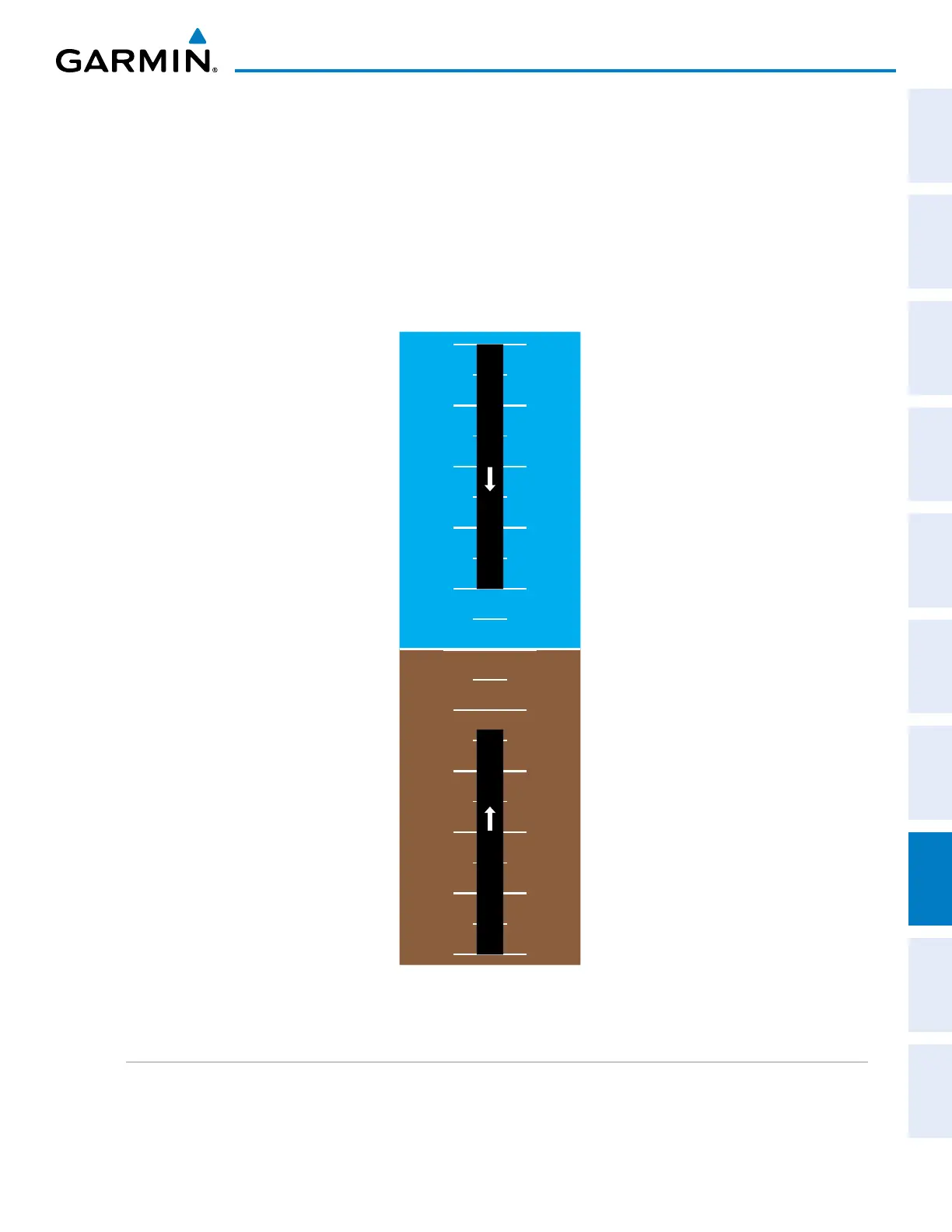190-00962-02 Rev. A
Garmin G1000 Pilot’s Guide for the Diamond DA42NG
559
ADDITIONAL FEATURES
SYSTEM
OVERVIEW
FLIGHT
INSTRUMENTS
EIS
AUDIO PANEL
& CNS
FLIGHT
MANAGEMENT
HAZARD
AVOIDANCE
AFCS
ADDITIONAL
FEATURES
APPENDICES INDEX
WithESP
™
engaged, and the aircraft in a nose-up condition, opposing force steadily decreases from 20° nose-
up to 10° nose-upasaircraftpitchmovestowardzerodegrees.ESP
™
disengages at 10° nose-up.WithESP
™
engaged, and the aircraft in a nose-down condition, opposing force steadily decreases from 23° nose-down to
13° nose-downasaircraftpitchmovestowardzerodegrees.ESP
™
disengages at 13° nose-down.
The opposing force increases or decreases depending on the pitch angle and the direction of pitch travel. This
force is intended to encourage movement in the pitch axis in the direction of the normal pitch attitude range
for the aircraft.
TherearenoindicationsmarkingthepitchESP
™
engageanddisengagelimitsinthesenose-up/nose-down
conditions.
Figure 8-102 ESP Pitch Operating Range When Engaged
(Force Increases as Pitch Increases & Decreases as Pitch Decreases)
30˚
25˚
20˚
15˚
10˚
5˚
0˚
5˚
10˚
15˚
20˚
25˚
30˚
30˚
25˚
20˚
15˚
10˚
5˚
0˚
5˚
10˚
15˚
20˚
25˚
30˚
35˚
40˚
45˚
50˚
35˚
40˚
45˚
50˚
50˚
45˚
40˚
35˚
50˚
45˚
40˚
35˚
ESPESP
HIGH AIRSPEED PROTECTION
Exceeding Vne will result in ESP
™
applyingforcetoraisethenoseoftheaircraft.Whenthehighairspeed
condition is remedied, ESP
™
force is no longer applied.

